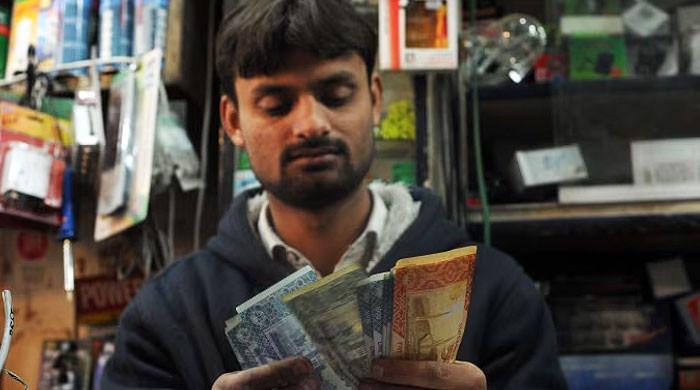Traders say IMF review and monetary policy will be key factors in determining the direction of the rupee
- The rupee ended this week at 279.19 against the dollar.
- Traders say there is no major pressure from the demand side.
- USD/PKR remains in the 279/281 range: Tresmark.
KARACHI: The rupee will trade in a narrow range in the coming days, supported by dollar inflows from remittances and exports, as traders await the outcome of the International Monetary Fund (IMF) loan review and monetary policy decisions later this month. It is expected that news It was reported on Sunday.
Over the next week, the local currency fluctuated within a small range in the interbank market, closing Friday at 279.19, slightly lower than Thursday’s 279.11 and Monday’s 279.20.
Traders said the rupee is likely to remain stable in the coming weeks as there is no significant pressure from the demand side and the supply side is expected to improve due to Ramadan and export earnings.
Markets are focused on the final review of the $3 billion IMF loan program, which is now due, and the State Bank of Pakistan’s (SBP) monetary policy announcement, expected by the third week of March.
Traders said the IMF review and monetary policy are key factors in determining the direction of the rupee in the medium term.
Financial technology firm Tresmark said in a note on Saturday that swap premiums, which reflect the difference between spot and forward exchange rates, remain at “excellent” levels but are expected to soften next week due to the impact of the financial crisis. Ta. The possibility of interest rate cuts increases.
“We expect USD/PKR to be firm, but mostly in the 279/281 range. Dollar liquidity is ample and we expect inflows to increase. “Forward selling by exporters interested in two-month contracts has become active,” he added.
Tresmark said that in recent weeks everyone has been talking about Pakistan approaching the IMF for a new loan program. Money no longer comes from elsewhere.
“Another concern is the systematic risk of large borrowers failing at a time of heightened geopolitical risks in the region.The IMF’s intentions are therefore clear, working with the new government to potentially “We want to turn the economy around,” he added. .
“We believe that the IMF will not disrupt the third part of the program as long as it can get some commitment from the next government. This will give us sufficient reserves for the next three months. ”
But the next new plan, which some people estimate at about $5 billion to $8 billion, will not be easy to achieve and will require reducing the budget deficit, eliminating subsidies and loss-making state-owned enterprises, and a host of other reforms. It becomes the central thing. These are necessary, but without solid GDP growth, the recovery will be long and painfully U-shaped.
Pakistan’s foreign exchange reserves held by the central bank decreased by $63 million to $7.95 billion as of February 23 due to external debt repayments.
“We expect the central bank to cut interest rates in its next monetary policy session (probably at the end of March). Both the government and the market want it, and the IMF will not resist it even if inflation continues on a downward trajectory.” Tresmark said.
The inflation rate based on the consumer price index in February was 23.1%, lower than the previous month’s 28.3%. The best part was that while energy prices lost their luster, slowing food and core inflation drove the economy.
